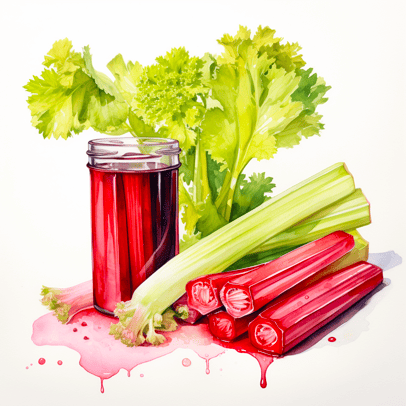
Don’t want to read the whole post?
Rhubarb and celery are distinct plants with different nutritional profiles and culinary uses. Celery is known for its long green stalks and is often used in salads and soups, while raw rhubarb, recognised by its red stalks, is typically used in sweet dishes due to its tart flavour.
ABOUT ME
Be beauty. Be plant-based!
As a former Registered Nurse and avid plant-muncher, I’m in love with how simple plant-based foods make it easy to be beautiful.

You’ll also love:
Savouring Celery: How to Store Celery Juice
Exploring the world of plant-based foods, today we dive into a flavourful comparison: rhubarb vs celery. Both these plants offer unique tastes and health benefits, making them a delightful choice for anyone looking to enhance their diet. Whether you’re a fan of the tartness of rhubarb or the crispness of celery, this post will guide you through their nutritional profiles and culinary uses.
Rhubarb: A Tart Powerhouse
Rhubarb, often known for its tart taste and vibrant colour, is a source of various medicinal purposes. Loaded with vitamin C and oxalic acid, rhubarb brings a unique combination of nutrients to the table.
In addition to its lovely role in desserts, the health benefits of rhubarb are significant, including its content of vitamin K which is essential for bone health and blood clotting.
When shopping in grocery stores, look for red rhubarb which is often sweeter and more tender than the green varieties.
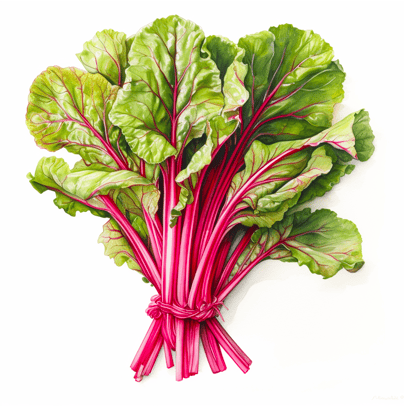
Its reddish acidic leafstalks not only add a burst of colour to your plate but also bring a refreshing change to your regular recipes, making rhubarb a great addition to both sweet and savoury dishes.
While many love its sour taste, it’s important to note that not all parts of the plant are edible. The rhubarb stalks are the only parts you should eat, as the leaves contain poisonous substances.
Celery: The Crunchy Hydrator
Meanwhile, celery is much more than a low-calorie snack. This long green vegetable is a powerhouse of nutrients, including vitamin B and pantothenic acid, essential for various bodily functions. Its crisp texture and mild flavour make it a versatile ingredient in the kitchen.
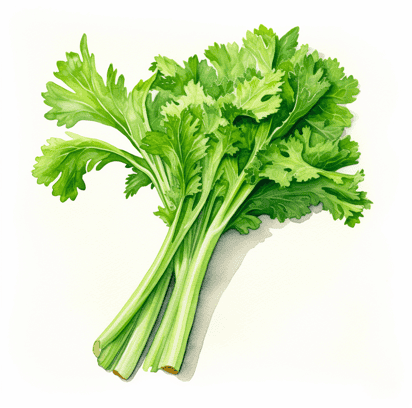
Often referred to as pink celery when it has a slightly redder hue, this crunchy vegetable is a great addition to any dish, from salads to soups. Its stalks, rich in dietary fibre, play a crucial role in weight management and maintaining healthy blood sugar levels.
The edible stalk of celery is not just good for your health, but also for your hydration, as it contains high water content. When looking for celery in grocery stores, choose stalks that are firm and vibrant, ensuring you get the freshest produce for your meals.
You’ll also love:
Beating Blemishes: How Celery Juice Benefits Acne
Rhubarb vs Celery: A Nutrition Comparison
When comparing rhubarb stalks and celery, it’s interesting to note their distinct nutritional profiles.
Rhubarb is renowned for its vitamin K content, which is crucial for blood health and bone strength.
On the other hand, celery offers a different set of benefits, being a good source of vitamin B, which is vital for energy production and brain health.
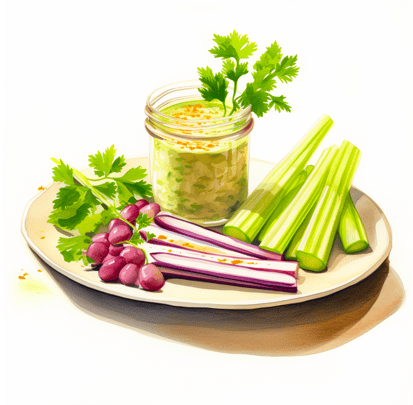
Both vegetables contain vitamin C, a powerful antioxidant that supports the immune system and skin health.
However, it’s important to be aware of the oxalic acid present in rhubarb, which, in high levels, can contribute to the formation of kidney stones.
Therefore, while enjoying the tart flavour of rhubarb and the crunchy texture of celery, it’s essential to consider these factors for a balanced and healthy diet.
Culinary Uses: From Sour to Subtle
The culinary world celebrates the unique flavours of both rhubarb and celery.
Rhubarb
Rhubarb, known for its sour taste, is a popular ingredient in sweet recipes. Its tart flavour makes it an ideal match for sugar in desserts like fruit pies and ice cream. The reddish acidic leafstalks of rhubarb can be cooked down to create a delightful filling or compote, offering a tangy twist to your favorite treats.
Rhubarb in Your Desserts
Rhubarb’s role in desserts is both traditional and innovative. The tart taste of red rhubarb makes it a perfect base for sweet recipes, balancing the sweetness with its natural acidity.

When cooked, rhubarb transforms into a soft, sweet, and tangy ingredient, ideal for ice cream toppings, fruit pies, and even jams. A classic combination is rhubarb with strawberries, offering a balance of sweet and sour flavours.
Try this: Stewed Rhubarb at Veggie Desserts, one of many sweet dishes possible with rhubarb.
Celery
On the other hand, celery, with its subtle taste, can be a great addition to both raw and cooked dishes.
From adding a crunchy element to salads to being a key ingredient in stews and soups, celery’s versatility is unmatched.
Its long green stalks can be chopped, diced, or even juiced, making it a staple in fresh produce recipes.
The edible stalk of celery, when combined with ingredients like lime juice, can elevate the flavour profile of any dish, showcasing the beauty of simple, fresh ingredients.
Try this: Sautéed Celery at Walter Wellness
Understanding the seasonal availability of rhubarb and celery can enhance your shopping and cooking experience. Rhubarb is best enjoyed in early summer, when it’s at its peak of freshness and flavour. This is the time when its reddish acidic leafstalks are most vibrant, indicating their ripeness and readiness for harvest.
On the other hand, celery is a versatile vegetable available year-round, but its freshness can be best ensured by looking for firm, vibrant stalks in your local grocery stores. When choosing rhubarb, opt for red rhubarb, which tends to be sweeter and more tender than other varieties.
Always remember to select rhubarb stalks that are firm and crisp, avoiding any with wilted leaves, as this indicates freshness and quality. Incorporating these seasonal ingredients into your diet not only ensures you’re eating them at their best but also supports sustainable eating practices by consuming produce when it’s naturally abundant.
Health Focus: Rhubarb vs Celery
When incorporating rhubarb and celery into your diet, it’s essential to balance their health benefits with potential risks.
Rhubarb is celebrated for its health benefits, particularly its vitamin C and vitamin K content. These nutrients are vital for immune health and bone strength.
However, rhubarb also contains oxalic acid, which, in high concentrations, can contribute to the development of kidney stones.
Thus, moderation is key, especially for individuals prone to this condition.
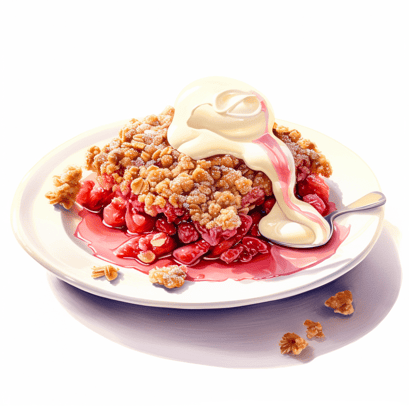
Celery, on the other hand, is known for its dietary fibre, supporting digestive health and aiding in weight loss.
Its role in maintaining stable blood sugar levels makes it a valuable addition to a health-conscious diet.
When choosing celery, look for long green stalks, which indicate freshness and maximum nutritional value.
By understanding these aspects, you can enjoy the tart flavour of rhubarb and the crunchy texture of celery while reaping their health benefits.
FAQ: Rhubarb vs Celery
Is celery and rhubarb the same?
No, celery and rhubarb are not the same. They are distinct plants with different nutritional profiles and culinary uses. Celery is known for its long green stalks and is often used in salads and soups, while raw rhubarb, recognised by its red stalks, is typically used in sweet dishes due to its tart flavour.
What vegetable looks like red celery?
The vegetable that most resembles red celery is actually rhubarb. Rhubarb is often mistaken for a vegetable as the stalks of rhubarb are similar in appearance to celery stalks, but it is technically a perennial plant. Its red stalks are a distinctive feature, setting it apart from other unusual vegetables.
What fruit resembles red celery?
No fruit closely resembles red celery. However, rhubarb, which is often used as a fruit in culinary contexts, could be likened to red celery due to its appearance. Rhubarb’s red stalks and large leaves can make it look similar to celery, but it’s not a fruit; it’s a plant stalk used in sweet recipes.
Is celery a fruit or vegetable?
Celery is a vegetable. It belongs to the Apiaceae family and is known for its crunchy, long green stalks. It’s commonly used in a variety of savory dishes and is also enjoyed raw as a healthy snack.
Are there two types of rhubarb?
Yes, there are primarily two types of rhubarb: hothouse rhubarb and field-grown rhubarb. Hothouse rhubarb, which tends to have lighter-coloured, more tender stalks, is typically grown in greenhouses. Field-grown rhubarb is often more robust and has the characteristic red stalks and large leaves, and is typically more tart.
How do you identify rhubarb?
Rhubarb can be identified by its large leaves and thick stalks, which range in colour from green to deep red. Raw rhubarb stalks are firm and glossy, and the red stalks are a common indicator of its variety. It’s important to note that only the stalks should be eaten, as the leaves contain toxic substances.